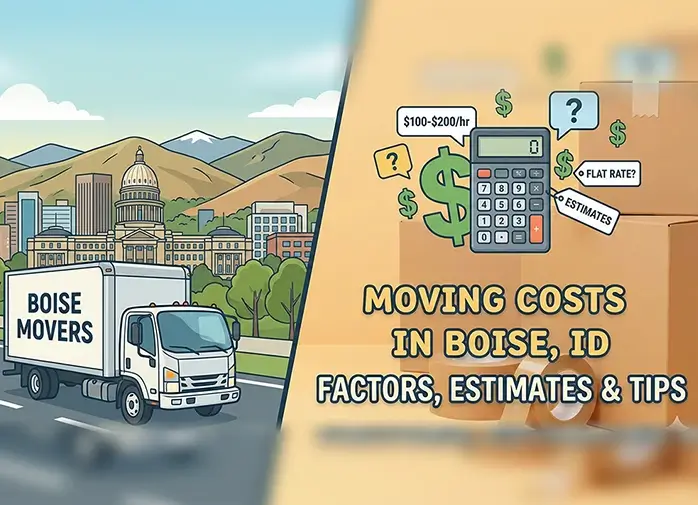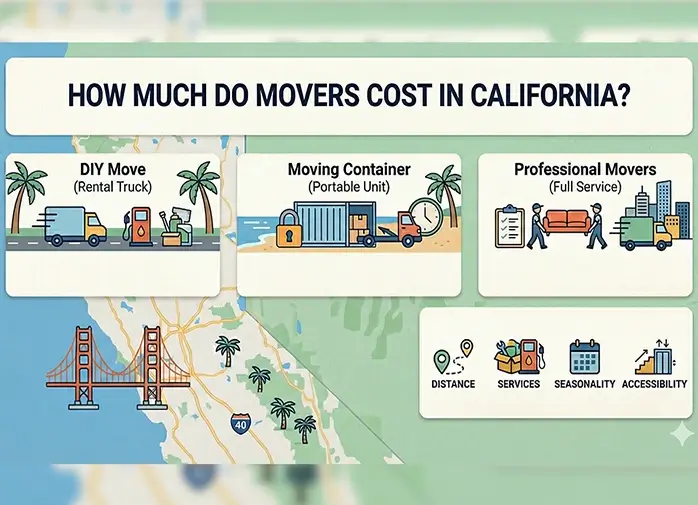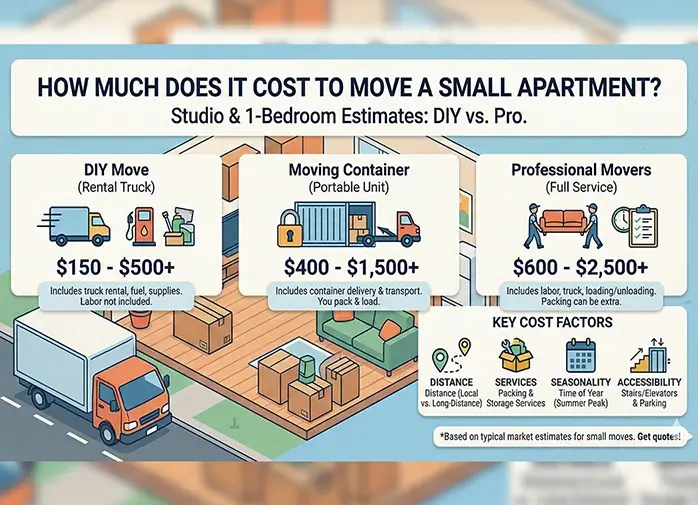How to Do an Interstate Move? – Complete Relocation Guide

Moving from one state to another is more than just loading boxes into a truck—it’s a life-changing event. Unlike a local move, an interstate move involves long distances, complex logistics, and additional legal requirements such as licensing and regulations for moving companies. Without proper planning, the process can quickly become overwhelming.
At VanLinesMove, we specialize in interstate relocations and know exactly what it takes to move households across state lines efficiently and safely. In this guide, we’ll walk you through the steps to do an interstate move the right way, helping you stay organized, save money, and avoid common mistakes.
8 Quick Steps to do Interstate Move
Step 1: Create a Realistic Moving Budget
The first step in any successful move is setting a budget. Interstate moves are generally more expensive than local moves due to fuel, mileage, weight, and time involved.
- Average Cost: $2,500–$7,500 depending on distance and home size.
- Factors that affect price: number of belongings, moving services, packing supplies, and timing.
- Tip: Always include a 10–15% buffer for unexpected expenses like storage or delays.
👉 VanLinesMove provides transparent quotes so you know exactly what’s included in your moving cost.
Step 2: Plan Your Timeline Early
Interstate moves require more coordination than local ones. Start planning at least 8 weeks before moving day.
- 8 Weeks Out: Research moving companies, declutter, and request quotes.
- 6 Weeks Out: Start packing non-essential items, notify utilities and schools.
- 4 Weeks Out: Confirm mover, arrange travel, and order packing supplies.
- 2 Weeks Out: Pack essentials, prepare documents, and confirm addresses.
- Moving Week: Defrost appliances, finish packing, and prepare an essentials box.
Step 3: Declutter and Downsize
The cost of an interstate move is based largely on weight and volume. Reducing the number of items you take can save thousands.
- Donate or Sell: Old furniture, clothes, and unused appliances.
- Recycle or Trash: Items that are broken or not worth transporting.
- Tip: Host a garage sale or use online marketplaces to turn clutter into cash.
Step 4: Choose the Right Interstate Moving Company
Not all movers are licensed to operate across state lines. Always check for:
- USDOT Number: Required for interstate moves.
- Insurance Coverage: Full-value protection for your belongings.
- Customer Reviews: Look for movers with positive long-distance experience.
- Transparent Quotes: Avoid companies that give vague or incomplete pricing.
👉 VanLinesMove is a licensed interstate moving company, offering full-service relocation, packing, and storage options tailored to your needs.
Step 5: Organize Packing and Supplies
Packing for a long-distance move is different from packing for a local one. Items will be in transit longer, making secure packing essential.
- Sturdy Boxes: Choose strong, double-walled boxes for fragile items.
- Protective Materials: Bubble wrap, packing peanuts, and moving blankets.
- Label Everything: Write room names and contents on each box.
- Special Items: Artwork, electronics, and antiques may require custom crating.
Step 6: Handle Legal & Administrative Tasks
An interstate move involves updating records and documents:
- Change of Address: Notify USPS, banks, and subscriptions.
- Driver’s License & Vehicle Registration: Required within 30–60 days in most states.
- Voter Registration: Update your information to vote in your new state.
- Insurance Policies: Review renters, homeowners, and auto policies for coverage.
Step 7: Transportation and Travel Plans
If you’re driving to your new state, plan your route, overnight stays, and fuel stops in advance. For long distances, flying may be more practical, with your movers transporting your belongings.
- Pet Travel: Arrange crates or pet transport services.
- Car Shipping: Consider auto transport if driving isn’t feasible.
- Essentials Bag: Keep important documents, toiletries, and clothes with you.
Step 8: Move-In Day Preparation
When your belongings arrive at your new home:
- Inspect Inventory: Check items against the mover’s checklist.
- Direct Movers: Guide them where to place furniture.
- Check Utilities: Ensure power, water, and internet are active.
- Unpack Smart: Start with essentials like kitchen and bedroom items.
Conclusion
An interstate move can feel overwhelming, but with the right planning and support, it doesn’t have to be stressful. By creating a budget, downsizing, choosing a licensed moving company, and staying organized, you can make your move smooth and successful.
VanLinesMove specializes in interstate relocations, offering reliable movers, transparent pricing, and full-service support to ensure you settle into your new state with ease.
👉 Whether you’re moving for work, family, or a fresh start, trust VanLinesMove to handle the journey across state lines.
Categories
- Moving Abroad & International Relocation153
- Moving Tips & How To Guides119
- Moving Tips & Specialty Moving40
- Moving Tips & How-To Guides34
- Car Shipping & Auto Transport25
- Moving Tips & Cost Guides9
- Moving Tips & Relocation Advice5
- Long-Distance Moving Guides3
- Moving Guides & Lifestyle3
- Moving Cost Guides3
- International Moving & Expat Living2
- Specialty Moving & Cost Guides2
- Moving Tips & How-To Guides2
- Moving Costs & Planning2
- Car Shipping & Moving Guides1
- International Moving Guides1
Recent posts
-

How Much Do Movers Cost in Boise? – Complete 2026 Guide
December 2025 -

How Much Do Movers Cost in California? – 2026 Pricing Guide
December 2025 -

How Much Does It Cost to Move a Small Apartment? – Complete 2026 Cost Guide
December 2025 -

How Much Do Movers Cost in Atlanta? Full Guide & Pricing Breakdown
December 2025

 Local Movers
Local Movers Last-Minute Movers
Last-Minute Movers Junk Removal
Junk Removal Long Distance Movers
Long Distance Movers Piano Movers
Piano Movers Heavy Equipment
Heavy Equipment Commercial Movers
Commercial Movers Moving Container
Moving Container Car Transportation
Car Transportation Furniture Movers
Furniture Movers Truck Rental
Truck Rental Moving Cost Calculator
Moving Cost Calculator Moving Planner
Moving Planner Packing Calculator
Packing Calculator Moving Checklist
Moving Checklist Moving Insurance
Moving Insurance FAQ
FAQ Contact Us
Contact Us Moving Loan
Moving Loan About Us
About Us







